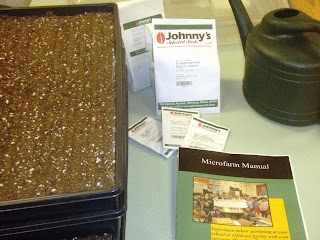YSA (Youth Service America) is offering a UnitedHealth HEROES Grant. The deadline is this week so if you are interested in attending, you should do so soon! With permission from YSA's staff, you might be able to get the deadline extended if you are interested in applying.
Educators, service learning coordinators and students in health professions are eligible to apply. As stated on YSA's website,
Grant recipients will receive up to $1,000 in support for service-learning projects that focus on childhood obesity, engage youth ages 5-25 in the planning and implementation process, and take place during Semester of Service 2010 (MLK Day, January 18, to Global Youth Service Day, April 23-25).
The website features an easy eligibility quiz that helps you determine whether or not you are qualified for the grant.
Starting a school garden would be a great use of the UnitedHealth HEROES Service Learning Grant. Gardens help fight obesity because they increase children's knowledge and consumption of fresh fruits and vegetables. Moreover, gardening is an excellent form of physical activity. As the grant description states, it would also be an awesome opportunity to have your students assist in the planning of the garden to have a truly hands-on experience and take some ownership and responsibility for their garden.
According to the requirements, you simply need to plan on starting your project during Semester of Service 2010 (MLK Day, January 18, to Global Youth Service Day, April 23-25). A service learning event must also take place on Global Youth Service Day--perhaps either planting the seeds in your garden or harvesting the produce from your container garden, cold frame and/or microfarm and making a meal or donating it to a local food pantry.
If you are trying to figure out how to fund your school garden, consider applying for the UnitedHealth HEROES Service Learning Grant.
Visit
YSA's website for more information and apply TODAY!


 (From the left: Trays filled with soilless potting medium, seeds, microfarm manual, and watering can)
(From the left: Trays filled with soilless potting medium, seeds, microfarm manual, and watering can)




